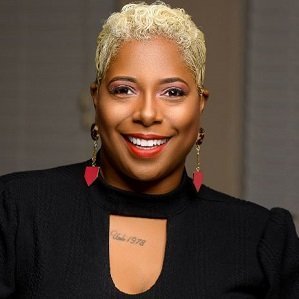The days of HIV being a death sentence are long over. With advancements in medicine and prevention efforts, contracting the virus doesn’t mean your life will end. But stigma, misinformation, and shame continue to burden Black and Brown folks who are overwhelmingly vulnerable to the virus.
Shadawn McCants (above) was diagnosed with HIV at 17-years-old. Now 46, she says back in 1995 when she was diagnosed, it was a death sentence. But McCants still went on to finish high school, get her undergraduate degree, and later her master’s degree. Now, she’s a licensed therapist and an advocate for HIV awareness.
In 2022, Southern states accounted for nearly 50% of new HIV infections, according to the Centers for Disease Control and Prevention. African Americans made up 37% of the estimated 31,800 HIV infections in that year, higher than other racial and ethnic groups. But what is it about the South that puts Black people at higher risk of contracting the preventable disease?
One of the most exacerbating factors to the rates of HIV infection is: stigma. HIV stigma and discrimination continue to affect the mental state of those living with the disease. And it can lead people to delay getting tested and treated for the virus.
“The stigma tends to be different in the South,” says Randevyn Pierre, sits on the board of directors of the Southern AIDS Coalition. “We’re living in the Bible Belt, where people tend to think more traditionally about family, identity, partnership, and sexual orientation.”
See “Stigma, Stereotypes, and the HIV Crisis in the South ” (August 26, 2024)


